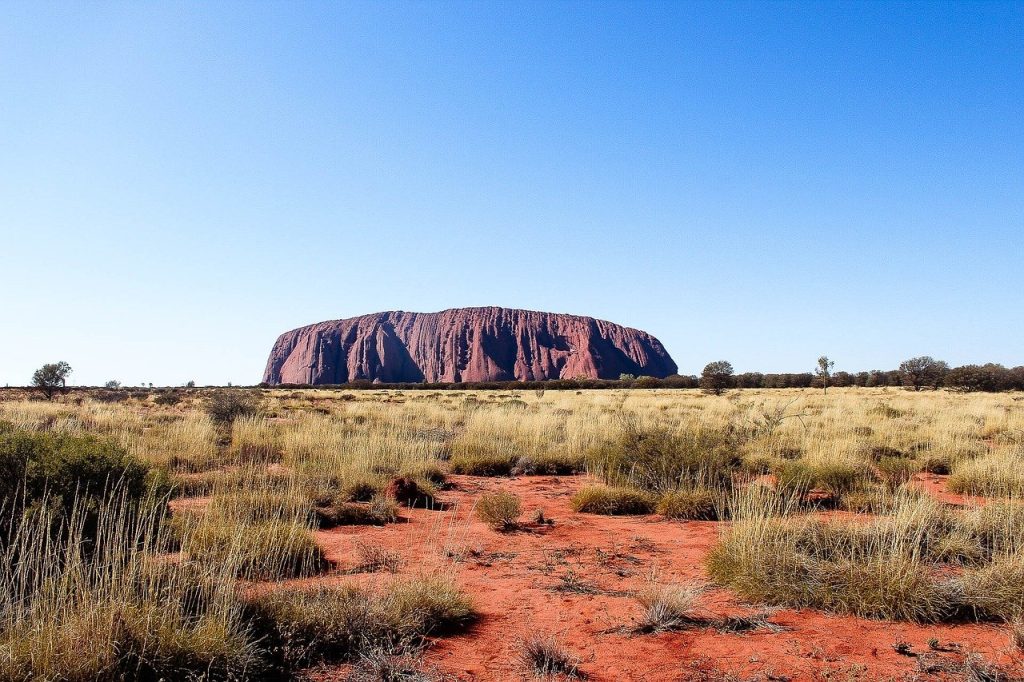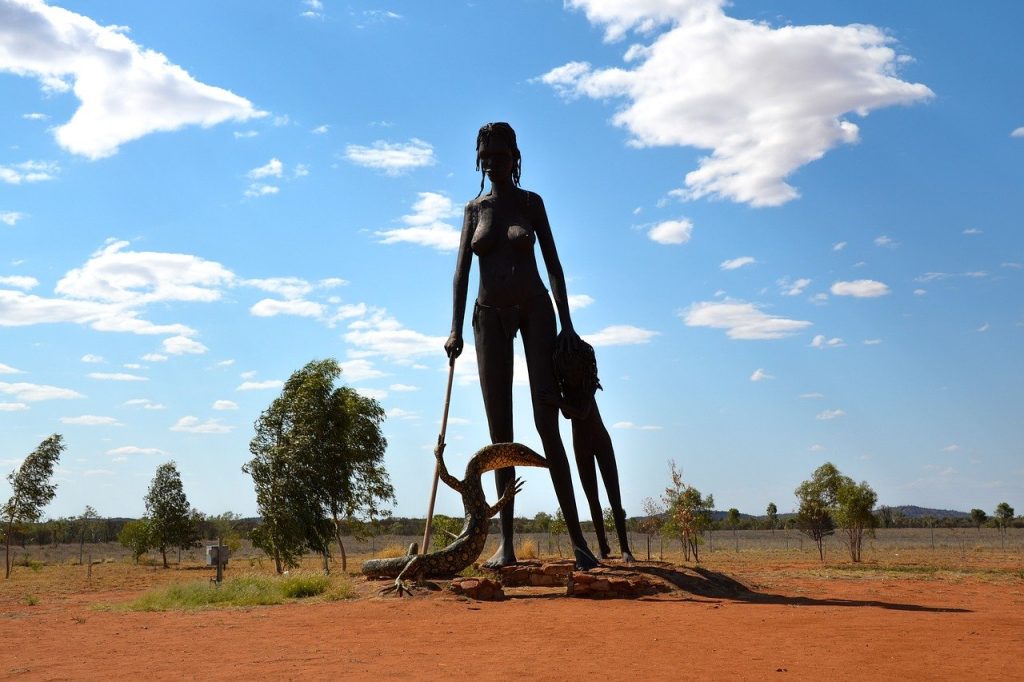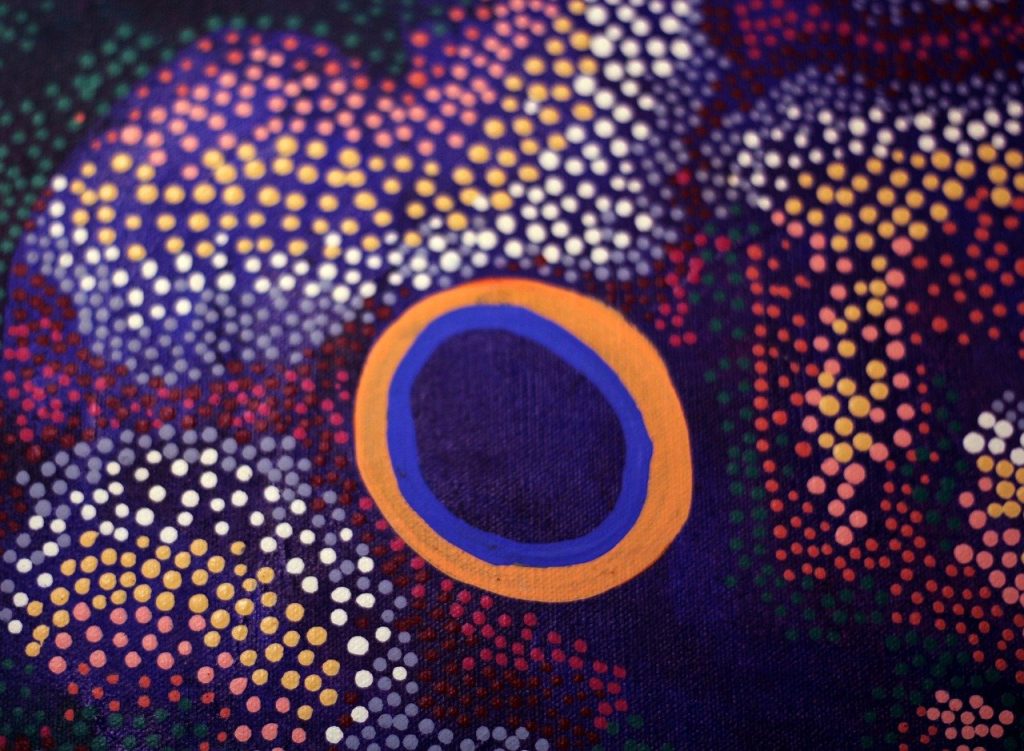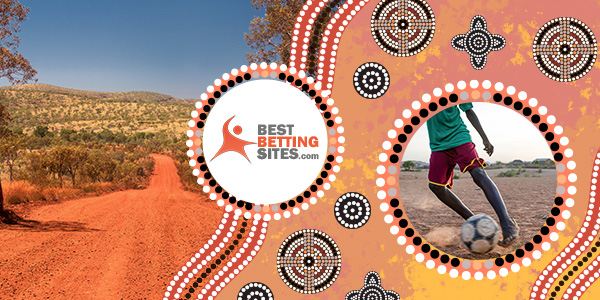Culture, history, and characteristics of Australian Aborigines and Torres Strait Islander peoples

There are two theories concerning the arrival of aboriginal people to Australia. Based on the findings gathered in archaeological sites like Nauwalabila I and Madjedbebe, many experts state that the first native Australian arrived approximately 45,000 or 50,000 years ago.
The Nauawalabila shelter is formed by a large slop of sand that fell from the nearby escarpment. Archaeologists found evidence of campfire use and a variety of tools and ornaments that aborigines are known to have used. One of these elements is ochre, a type of clay rock used as a painting material. Stone tools, as well as food remains, were also found.
However, many experts consider that aborigines have lived on Australian soil much earlier: from 65,000 to 80,000 years ago. They argue that the evidence found in Nauwalabila I may have been moved to an older ground level by termite activity, which is commonly found in that area.
In both cases, the first settlement of native Australians is estimated to have taken place in a time of lower sea levels. This means that they might have migrated from Asia to Australia by land. To cover distances over 200 km, they are believed to have used watercraft. This would make it the earliest nautical expedition in history.
Evidence suggests that the aboriginal Australians were highly active during the latest glacial period, approximately 18,000-30,000 years ago.
Nations
The native Australian people or Indigenous Australians are divided into two groups: Australian Aborigines and Torres Strait Islander peoples. While the former are descendants of those that inhabited the territory before British colonization, the latter come from residents of the Torres Strait Islands. This is a group of islands located in modern Australia, more specifically in Queensland.
Yet, beyond this division the classification process becomes difficult. The truth is that these peoples have been analysed from a Western perspective. The classification of different aborigines’ groups was always subjective and depended on the cultural and social point of view at the time. However, with the information available today, scholars classify the Australian Aborigines into two groups by geography (where they lived) and the language (or dialect) they spoke. For more information on the location of different groups of aborigines, you can have a look at this map of Indigenous Australia.
Demonyms
This is the classification due to the geographical position where the people dwelled. The anthropologist Harry Lourandos established that aborigines lived mainly across three cultural areas:
Northern, Southern, and Central Australia. Northern and Central parts were more populated due to their proximity to the sea and a wider availability of natural resources.
Next, you’ll find eight Aboriginal languages classified due to their location:
- Anangu (northern South Australia)
- Goorie (Southeast Queensland)
- Koori, or Koorie (New South Wales and Victoria)
- Murri (southern Queensland)
- Nunga (southern South Australia)
- Noongar (southern Western Australia)
- Palawah (Tasmania)
- Tiwi on Tiwi Islands off Arnhem Land (NT)
From this, we can derive a subgroup according to the language or dialect they spoke. These languages used to be 250 (plus 800 dialects), but only 13 are still in use today. Here are 10 examples that can be placed under this category:
- Anindilyakwa on Groote Eylandt (off Arnhem Land), NT
- Arrernte (central Australia)
- Aranda people (central Australia)
- Bininj (Western Arnhem Land)
- Gunggari (south-west Queensland)
- Muruwari people (New South Wales)
- Luritja (Kukatja), an Anangu sub-group based on language
- Ngunnawal (Australian Capital Territory and surrounding areas of New South Wales)
- Pitjantjatjara, an Anangu sub-group based on language
- Wangai (Western Australian Goldfields)
Indigenous Australians, Aboriginal Australians, and Torres Strait Islanders
Differentiating these three concepts is important to understand the true nature of this land’s original inhabitants. When speaking about Indigenous Australians, we refer to all native peoples including Australian Aborigines and Torres Strait Islanders. Yet, many aborigines and islanders don’t like to be called ‘Indigenous’ as this term is too wide.
Torres Strait Islanders are those whose origins are on the said islands. This strait is now a part of the Australian state of Queensland. Although in our days most Torres Strait Islanders live on the mainland, we can still see that approximately 5,000 of them are still based on the islands.
With a Papuo-Austronesian-based culture, the islanders are by nature seafaring people, and they present a rich cultural activity spanning mask-making, sculpture, and printmaking. They can be divided into three large groups based on cultural and geographical divisions.
Besides the creole, there are two other widely spoken languages. The Kalaw Lagaw Ya, also known as Western-central Torres Strait Language, can be found on the central, western, northern, and southwestern islands. The eastern islands, on the other hand, are characterized by the use of Meriam Mir, one of the four Eastern Trans-Fly languages.
The Torres Strait creole is based on the English tongue and is especially used for commerce and trading purposes.
Colonization
The colonization of native peoples by the British started in 1788 and did not lack violence. In that time, experts estimate that between 750,000 and 1.25 million aborigines lived in what we know today as Australia.
The process involved a systematic seizing of their lands which resulted in the death of nearly 20,000 aborigines and a general impoverishment of the native communities.
In 2008, Prime Minister Kevin Rudd presented a formal apology towards the victims of the ‘Stolen Generation’. This was a particularly dreadful policy put in practice from 1910 to 1970 by which children were stolen from their aboriginal families. With their names changed, they were put into foster families and entered into institutes while forbidden to speak their native tongue.
Half a century after that, there have been many improvements to protect the right of Indigenous Australians. Yet, there are still many issues that remain to be resolved.
Culture, society, and religion

The worldview of aborigines is centred on the concept of ‘the Dreaming’. Concerning both the past, present and future, ‘the Dreaming’ or ‘dream-time’ is a complex philosophy.
According to their beliefs, the world was created by mythic beings who populated the Earth with plants, animals, and humans. They also left behind a set of rules by which the aborigines must abide. After their physical death, the beings continued to exist in the spiritual realm and are the only ones capable to control power and fertility. The aboriginal people thus conduct a series of rituals to honour these ‘Dreaming’ beings and keep the flow of life going in perfect balance.
The Australian Aborigines believe it’s possible to connect with the spiritual realm through their dreams. Thus, they can bring to people valuable knowledge. Through a variety of myths, objects, dances, and rituals they can balance the physical and spiritual worlds to maintain the cosmic order. All in all, this belief system has helped Aborigines to effectively cope with the challenges of everyday life and achieve a healthy relationship with their surroundings.
The social customs were mainly established by a mixture of religious, ecological, and economic factors. There was a social unit that owned specific lands and territories. The concept of kingship existed and was passed through generations by male members of the family. However, others could claim a place in the royal layers under certain conditions.
Sport in the community
Sports activities are very important for the Australian Aborigines from a very young age. Some traditional games, like Bubberah, Goomboobooddoo, and Gurril Boodthul, are connected to the indigenous culture and way of life. They can include accuracy, durability and strength and are quite similar to sports from other parts of the world.
However, traditional games are not the only sports practised in the community. Native Australians participate in professional and amateur leagues on state and national levels. They are part of the Aboriginal National Rugby League and Australian Football League. Men and women take part in various netball, cricket, and volleyball carnivals and low-tier tournaments.
Aboriginal and Torres Strait Islander children are also involved in various sports from the same character as explained above. However, they have much more amateur character consistent with the degree of progress shown by the individuals in that current moment. Overall, sports are appreciated by the native Australians!
Language
The aborigines spoke over 200 languages and almost 800 different dialects. However, the language did not define ‘cultural belonging’, but it did connect people with certain territories. Although they related and socialized mainly with inhabitants of their same tribes, aboriginal people did not have the concept of ‘nationality’ impressed in their worldview.
There were approximately 500 groups, which the colonialists called ‘tribes’, that were formed by people living in the same territory, sharing the same language and cultural features. Nonetheless, these did not constitute economic or political entities.
Many of the 200 languages are extinct today, although some are still spoken by the eldest. In 2013, statistics showed that only 13 of the native languages were still widely spoken while 50 were only spoken by older members of the community.
One of the most spoken languages in terms of the number of speakers is Warlpiri. Mainly used in the Willowra, Lajamanu, Yuendumu, and Nyirripi communities, it was estimated to have 2500 speakers in 2006.
Ten years later, the census of 2016 showed that 9.8% of Indigenous Australians speak their native language at home. The most common ones are Creole with 11%, Yumplatok with 9.4%, and Djambarrpuyngu with 6.7%.
Traditions
Dances, songs, and stories
The dances, songs, and stories of the Australian Aborigines are more than mere entertainment. Historians have interviewed the eldest members of native communities and found out that this is the people’s way to preserve and pass knowledge.
Aborigines have extensive memory and show an outstanding knowledge of their environment. They remember all types of plants and animals, their characteristics, mutual interaction, etc.
The ‘Dream Paths’
They do not consider themselves owners of their land. Everything on Earth was created by the Dream-time beings, who then left this plane of existence to merge with the spiritual realm. In this journey, they left behind ‘dream paths’. One of these people’s most beautiful traditions is to follow the ‘dream paths’ while singing a ritual song.
Corroboree
Native Australians connect with the spirit world through music and dances specifically organized into a ‘Corroboree’ structure. This practice is considered highly sacred and can’t be witnessed by outsiders.
Marriage
A male from one of the subgroups can only marry a woman from the other subgroup. Likewise, there are different conditions for the union to be valid. There must be proper betrothal arrangements including the exchange of gifts to confirm the contract. The marriage itself is consummated after the betrothal when the couple is already living together and engaging in intimate relationships. The union is consolidated with the birth of the first child.
Stunning body art

Australian Aborigines are known worldwide for their impressive body painting traditions. However, few people know the deep meaning of this practice. Body art is done following strict rules and representing a person’s clan, family, position, totemic animal, and ancestors.
The types of ornaments and general art vary significantly among the Aboriginal groups located across Australia. This is one of the most ancient traditions and it has deep religious significance.
Smoking ceremonies
In these ceremonies, native Australians burn plants to honour their ancestors. With this smoke, they show their respect for the land, the water, and the sea. One of the preferred herbs for this practice is the Berrigan emu bush or Eremophila Longifolia. Research shows that this plant’s smoke has antimicrobial properties.
Australian Aborigines today
‘Closing the gap’ is an agreement between the Indigenous Australians and the government. Due to its characteristics, it’s an agreement without precedents. For the first time, the goals are set by the Torres Strait Islanders and National Aborigines. In the same way, they drive and own the achieved outcomes.
The spirit of this approach is mainly focused on helping Aborigines and Torres Strait Islanders to achieve an optimal lifestyle. This entails spiritual, economic, and physical wellbeing. It’s a well-known fact that culture, respect for the elderlies, and balance with the spiritual world through their traditions are key to achieving this result. Hence, the following targets have been established:
Life expectancy
Aboriginal Australians and Torres Strait Island people must enjoy a long and healthy life. For this, the agreement intends to close the gap in life expectancy by 2013.
Healthy babies
The goal is that 91% of the Torres Strait Islander and Aboriginal babies are born with a healthy weight.
Educated children
At least 96% of Aborigines and Torres Strait Islander children must acquire a 12-year certification. Likewise, 70% must at least acquire a tertiary level.
Job positions
The agreement intends to increase the employment level among these communities to 62% by 2031 (people from 25 to 64 years old).
Appropriate housing
People should be able to afford appropriate housing according to the number of family members, needs, and projects. By 2031, 88% of Aborigines and Torres Strait Islanders must be living in appropriate-sized houses.
Respect for culture and healthy relationship to their land and waters
By 2030 there must be a 15% increase in the areas covered by the National Aborigines and Torres Strait Islanders’ interests or legal rights. There must also be an increase in the number of spoken Aboriginal and Islanders’ languages.
Conclusion
Through the centuries and like in other continents, the Indigenous people of Australia have suffered unfair treatment. From the conquering of their territories to the removal of their children, these policies have led to an impoverishment of the native communities.
Yet, these peoples have a pearl of ancient wisdom and a variety of traditions, supporting a rich cultural belief system. By understanding these cultures, their characteristics, and habits, we can help them thrive again, taking advantage of both the Western culture and their own.
